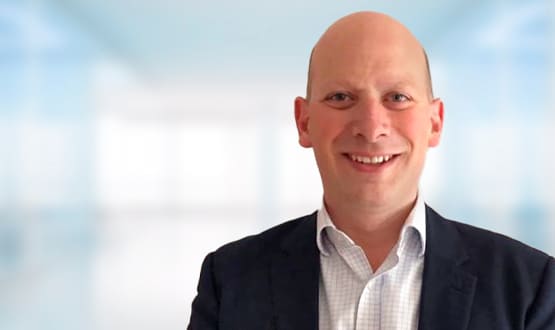Industry Spotlight: Tim James, nursing executive, Cerner
- 20 May 2022

Tim James is a nursing executive with Cerner. He has many years of experience as a paediatric nurse working in the NHS, and is co-chair of the RCN’s eHealth Forum. He shares his passion for making the EPR sustainable with Digital Health.
When Tim James was asked to step away from his day job to help support the development of a new IT system at a children’s intensive care unit, little did he realise that it would lead to a new career.
He had been working as a paediatric nurse for Guy’s and St Thomas’ NHS Foundation Trust when he took on the new role, as the first clinical informatics nurse at London’s Evelina Children’s Hospital. It was, he admits, a steep learning curve.
“I had really no idea what I was doing,” he says. “I was a bit like a rabbit in the headlights. But thankfully I came alongside the supplier we were working with at the time, and I began to learn about configuration, and about change management, and how you really engage with people and drive a project forward. I really saw what digital transformation could do in a clinical environment, and that was really the start of it for me.”
After working on several IT projects while still in the NHS, Mr James made the decision to join digital health giants Cerner, where he is now a nursing executive.
He still works clinically, which is a decision that keeps him close to what is happening on the ground, and gives him vital, up-to-date experience of what it’s like to be an end user of digital health.
Perhaps that’s why he’s so keen to ensure that there is ongoing support for organisations that invest in digital solutions – with a recognition that implementation and optimisation does not stop when a system goes live.
“The funding model in the NHS is all about ‘here’s a capital bid, go and put in the EPR’. There are massive project teams, everyone heads for go-live and then you go live – and that’s absolutely brilliant. That shouldn’t be the end, however; that’s just the beginning. But the investment model isn’t there to help people get the most out of their new system.”
Sometimes, he adds, the cultural thinking isn’t there amongst senior leaders across the ecosystem to recognise that putting in the EPR is just one step. You also need to think about what you’re going to do to optimise it, to maintain it, to make it even better.”
What is often missing is the ongoing support to continue an organisation’s digital transformation. “For example, if you’re putting in an EPR today, then in 10 days’ time you need to put in a new nursing assessment. Okay, someone can build that new assessment, but you’ve still got to work with your organisation to help support them to implement.
It’s not just a ‘one time only’ at go-live.”
This is particularly important at the moment, he adds, because so many NHS organisations are putting in EPRs to help meet the health secretary’s priority of 90% of trusts to have one in place by December 2023. “That’s a great target, but you need to think about what happens after that as well.”
Cerner is encouraging clients to take a longer-term approach to implementation with the aim of creating truly sustainable digital transformation across trusts and the local health and care system. One example is adoption coaches – Cerner employees who are embedded within an organisation not just for go-live, but for the following year. This is already working well in Royal Free London NHS Foundation Trust and West Hertfordshire Hospitals NHS Foundation Trust, he adds.
“The adoption coach meets doctors and nurses and other clinicians, and goes through how they are using the system at the moment [backed with analytics that actually shows how they are using it] and how it could be done better – how we can make their lives easier by using a particular workflow or functionality. Our clients are definitely seeing a value in that.”
Cerner also recommends that trusts have an ongoing “champion” programme – staff who are the internal contacts and advocates for the EPR. “These champions aren’t just for go-live – they need to be forever,” he stresses.
Champion roles are also a great way of growing the clinical IT workforce and expertise, he adds, which is another passion of his. As co-chair of the RCN’s eHealth forum, he is very keen that all organisations have a digital nursing leader to help drive forward change in a way that suits the largest staff group within the NHS, and therefore benefits patients. The committee will be raising the issue of digital leadership at this year’s RCN Congress in June.
Making these changes are everyone’s business, he adds, including suppliers, NHS organisations and government, and it’s vital that clinicians have a real voice. But it’s not just about having chief clinical or nursing information officers. “We need that groundswell of introducing our young student and early career nurses, doctors and AHPs to informatics, and giving them these opportunities. It’s in everyone’s interests to have a clinical workforce showing digital leadership at every level, driving optimisation and sustainability and improving patient care and experience.”




